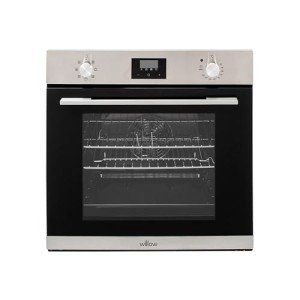20 Top Tweets Of All Time Concerning Built In Ovens
Built-in Ovens and Hobs: The Perfect Culinary Companions
In the world of modern cooking areas, built-in ovens and hobs have actually ended up being essential components, linking functionality with design. Using going beyond built in electric double oven and hob packages and visual appeal, these appliances are created to perfectly integrate into kitchen cabinetry, taking full advantage of space while elevating the cooking experience. This post explores the subtleties of built-in ovens and hobs, detailing their features, benefits, and the most recent trends in kitchen design.
What Are Built-in Ovens and Hobs?
Built-in ovens are appliances developed to be set up within kitchen cabinets, using a streamlined and modern look. They are available in various types, consisting of wall ovens, double ovens, and steam ovens. Hobs, or cooktops, are similarly integrated into countertops and be available in a number of configurations such as gas, electric, and induction designs.
Feature
Built-in Ovens
Hobs
Setup
Fixed within cabinetry
Integrated into counters
Cooking Methods
Convection, steam, traditional
Gas, electric, induction
Design Options
Contemporary, retro, etc.
Various finishes and sizes
Sizes Available
Requirement, mini, double ovens
2 to 6 burners
Energy Efficiency
High
Varies by type
Advantages of Built-in Ovens and Hobs
Buying built-in ovens and hobs includes many advantages, making them attractive choices for any kitchen.
1. Space-Saving Design
- Maximized Counter Space: Built-in appliances are developed to make use of vertical area, leaving more space on countertops for cooking and other kitchen tasks.
- Customizable Layouts: Homeowners can create their kitchen layouts based upon their cooking practices, enabling a more customized environment.
2. Improved Aesthetics
- Streamlined Integration: Built-in models blend flawlessly with cabinets and kitchen décor. This unified design creates a refined and expert appearance.
- Variety of Finishes: Available in numerous styles and surfaces— such as stainless-steel, matte black, and colors— these appliances can be tailored to fit the kitchen's overall theme.
3. Enhanced Cooking Efficiency
- Modern Technology: Built-in ovens frequently include advanced cooking innovation, such as exact temperature control, smart functions, and self-cleaning modes.
- Faster Cooking: Many built-in hobs, particularly induction models, use quicker heating times and efficient cooking, enabling faster meal preparations.
4. Increased Convenience
- Ergonomic Design: Elevated installations reduce the requirement to bend down for cooking jobs, providing much better availability.
- Several Cooking Modes: Built-in ovens may come equipped with numerous cooking modes (like roasting, baking, and broiling), offering flexibility in meal preparation.
Picking the Right Built-in Oven and Hob
With many options available, selecting the ideal built-in oven and hob depends on various factors.
1. Cooking Style:
- Frequent Bakers: Consider a stove for even baking and comprehensive heat distribution.
- Casual Cooks: A standard electric design might be sufficient for simple meal preparations.
2. Kitchen Space:
- Small Kitchens: A compact wall oven can save space while still offering necessary cooking functions.
- Large Kitchens: A double oven setup can deal with numerous meals simultaneously.
3. Fuel Type:
- Gas vs. Electric: Those who prefer accurate heat control may select gas hobs, whereas induction hobs are applauded for speed and security.
4. Budget:
- Keep an eye on price varieties. Built-in ovens and hobs can range from budget friendly options to high-end models, leaving space for customers to choose according to their spending plan.
Latest Trends in Built-in Kitchens
As kitchen areas evolve, so do the appliances within them. Here are a couple of present trends affecting built-in ovens and hobs:
1. Smart Technology
- Wi-Fi and App Integration: Smart ovens can be managed through mobile phone apps, allowing users to preheat their oven from another location or keep track of cooking development from anywhere.
2. Multi-functionality
- All-in-One Appliances: Manufacturers are increasingly producing multi-function ovens equipped with steamers, air fryers, and grills in one system, promoting benefit.
3. Minimalist Styles
- Sleek Designs: Minimalist looks are prevalent, with makers concentrating on simplistic designs and hid controls to keep a tidy surface.
4. Color Preferences
- Vibrant Choices: Beyond standard stainless steel, vibrant colors and matte finishes are gaining appeal, providing property owners more style flexibility.
Frequently asked questions
Q1: How long do built-in ovens and hobs usually last?
A1: Built-in ovens and hobs can have a life expectancy of 15-20 years with appropriate maintenance.
Q2: Are built-in ovens and hobs energy-efficient?
A2: Many modern built-in ovens and hobs are developed to be energy-efficient, particularly induction and convection designs, which typically consume less energy than conventional choices.
Q3: Can built-in ovens be installed in any kitchen?
A3: Yes, built-in ovens need correct kitchen cabinetry and ventilation however can be set up in numerous kitchen layouts.
Q4: What is the distinction between gas and induction hobs?
A4: Gas hobs utilize flames for heat, using quick temperature adjustments, while induction hobs utilize electro-magnetic fields for faster, more energy-efficient cooking.
Q5: Can I install a built-in oven myself?
A5: While DIY installation is possible, it is frequently advisable to seek expert help to guarantee safe and proper setup, particularly for gas lines.
Built-in ovens and hobs are more than simply kitchen appliances; they are integral elements that improve the cooking experience and add to the overall stylistic narrative of modern cooking areas. Offered their myriad benefits, consisting of space-saving style, enhanced visual appeals, and cooking efficiency, it is no surprise that they have actually become staples in contemporary home design. With technological improvements and a variety of configurations offered, these appliances are set to remain at the leading edge of kitchen innovation for many years to come. Whether one is a culinary amateur or a seasoned chef, built-in ovens and hobs undoubtedly provide the versatility and style needed to raise any cooking undertaking.
